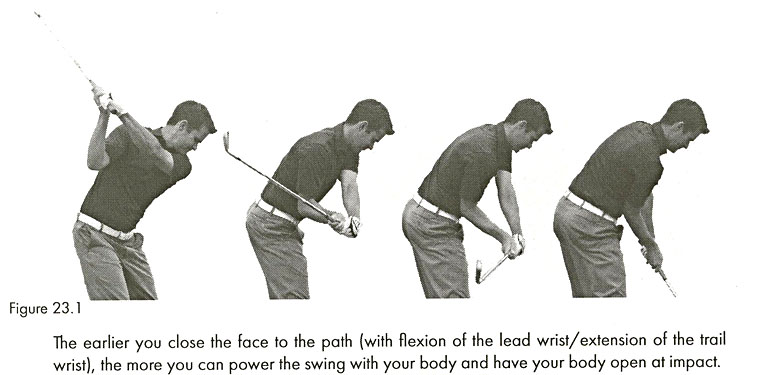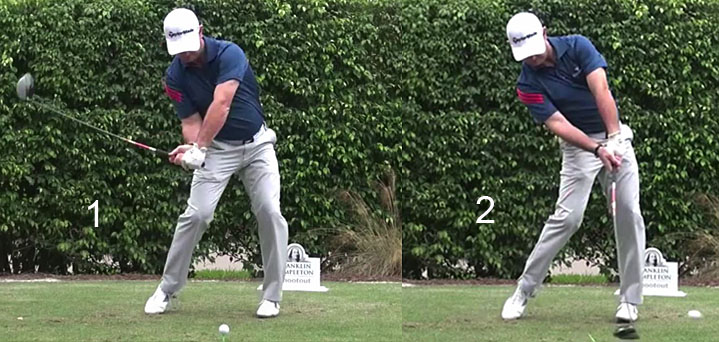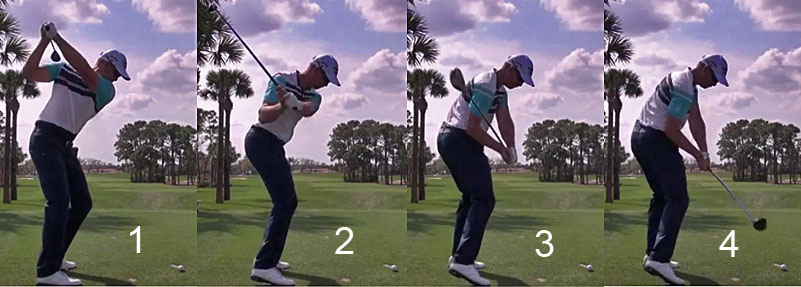Post by imperfectgolfer on Jun 2, 2018 11:56:15 GMT -5
I have produced a 55 minute video on topics related to the effect of left wrist bowing, or cupping, at the end-backswing position on the clubface orientation and I have discussed the compensatory moves needed during the downswing in order to get a square clubface by impact.
This video was produced on my condo unit's outdoor deck at sunrise on what was supposed to be a cloudy morning. Unfortunately, the sun broke through the clouds after I started filming and the sunlight shone across my deck causing the video to become too contrasty, and too "washed-out". I apologise for the poor quality of the video. To view the video at the maximum level of detail, set your you-tube display settings to the highest resolution that your display monitor is capable of producing and view in "full screen" mode.
Here is a brief summary of the topics that I discussed during the 55 minute video-:
i) Between the 0:00 - 10:47 minute time point of the video, I discussed (after an initial introduction) the LAFW concept and how the clubface cannot get too open during the backswing if the LAFW is intact and if the clubshaft is continously "on-plane". The clubface can only become too open during the backswing action if the left forearm over-pronates resulting in an off-plane clubshaft motion. I also discussed why I never use the ground as a reference point for deciding whether the clubface is open or closed at the end-backswing position.
ii) Between the 10:47 - 22:01 minute time points of the video, I discussed the "Dustin Johnson move" where I demonstrate that when Dustin Johnson bows his left wrist he angles the clubshaft to a "laid-off" position at his end-backswing postion, which means that he has disrupted his intact LAFW and caused the clubshaft to become off-plane. I then demonstrated that because he retains roughly the same degree of left wrist bowing during his entire downswing, he will arrive at the P6.5 position with a clubshaft that is angled backwards-and-inwards relative to his left forearm and that causes the clubface to be more open relative to the ball-target line. Therefore, to acquire a square clubface by impact, he needs to use an additional amount of left forearm supination - relative to another professional golfer (eg. Keegan Bradley) who also uses a moderately strong left hand grip, but who doesn't bow his left wrist.
Here is a link to a review paper where I describe the "Dustin Johnson move" in much greater detail.
iii) Between the 22:01 - 38:41 minute time point of the video, I discussed the "Reverse Motorcycle move" which many golf instructors incorrectly think is the same phenomenon as the "Dustin Johnson move" because it incorporates the biomechanical phenomenon of left wrist bowing. However, the "Reverse Motorcycle move" (which is also called the "Motorcycle move" or the "twistaway maneuver") is actually due to a finger torquing action (due to activation of the flexor digitorum muscles in the left forearm) that twists the clubshaft counterclockwise around its longitudinal axis, and any left wrist bowing is a secondary effect reflective of a large amount of twistaway action. I also demonstrated how the clubface-closing effect of the twistaway phenomenon dissipates in the later downswing as the clubshaft reaches closer to impact due to the outward/centrifugal pull forces generated by a fast-releasing club. Thirdly, I also demonstrated how a golfer cannot use a larger amount of body rotation in order to close the clubface and thereby avoid having to use a PA#3 release action (which is due to left forearm supination) in the later downswing. Therefore, in conclusion, it is a real life" fact that the use of the "Reverse Motorcycle move" combined with a larger amount of body rotation does not decrease the amount of left forearm that has to happen during the late downswing's PA#3 release action (for a given level of left hand grip strength).
Here is a link to a review paper where I describe the "Motorcycle move" in great detail.
iv) Between the 38:41 - 48:21 minute time point of the video, I discussed the effect of left wrist cupping at the end-backswing position on the clubface orientation and I demonstrated what effect that left wrist cupping phenomenon would have with respect to the clubshaft/clubface as the club gets closer to impact presuming that the golfer retains the same degree of left wrist cupping during the downswing.
v) Between the 48:21 - 53:47 minute time point of the video, I discussed the role of right forearm pronation during a PA#3 release action. If optimally performed, a right forearm pronatory motion happening in the later downswing can synergistically assist the left forearm in performing an efficient grip roll motion during the PA#3 release action. However, if the degree of right forearm pronation is excessive (relative to the degree of left forearm supination) it will likely result in left wrist breakdown and left wrist circumduction through impact.
Jeff.





